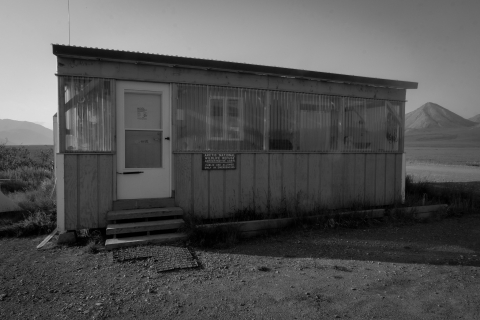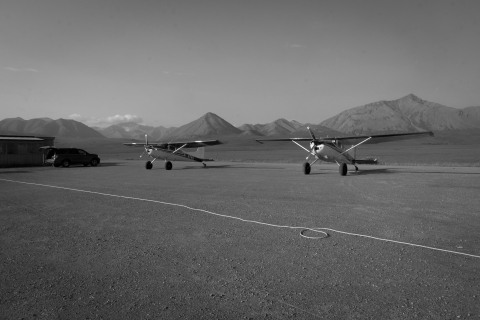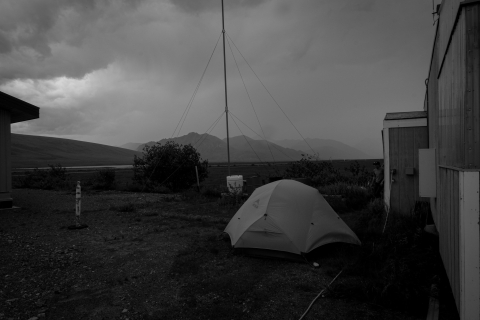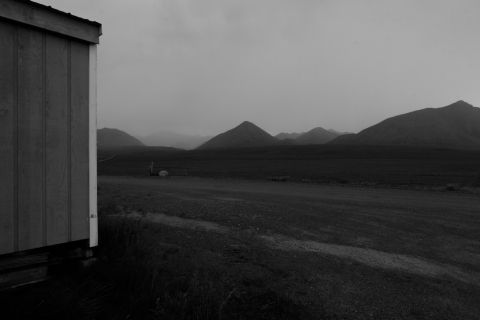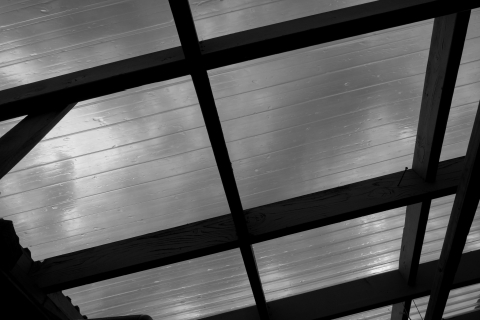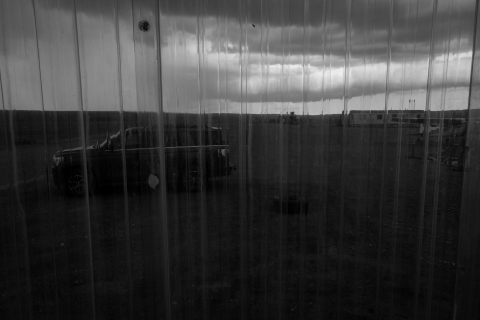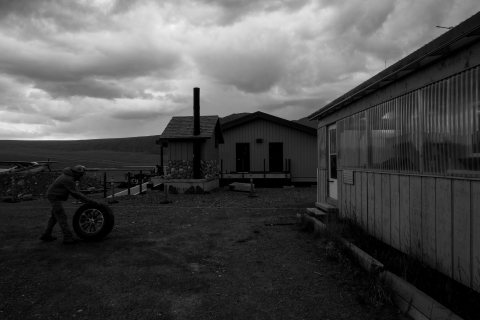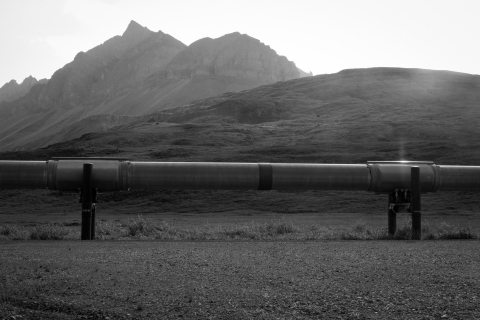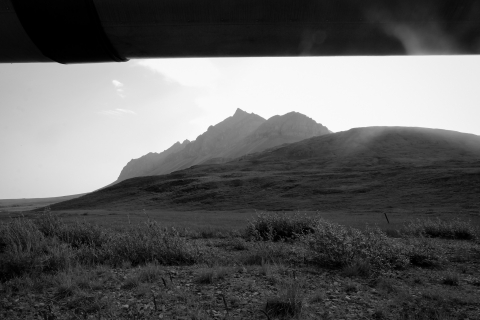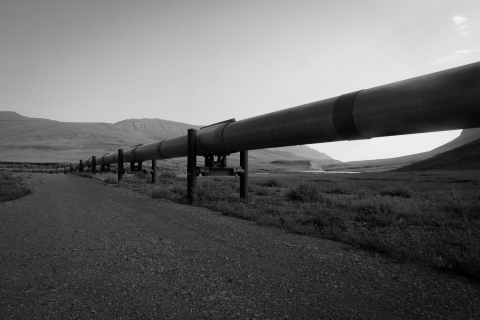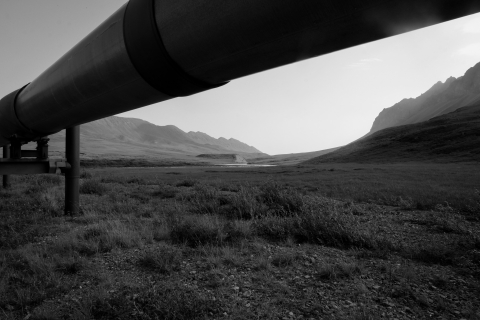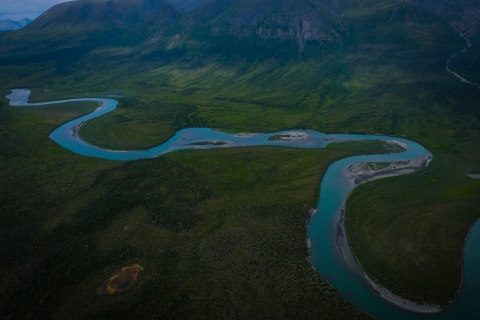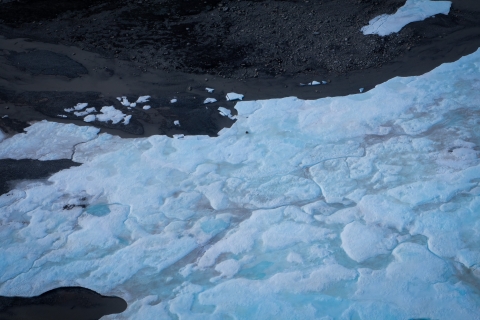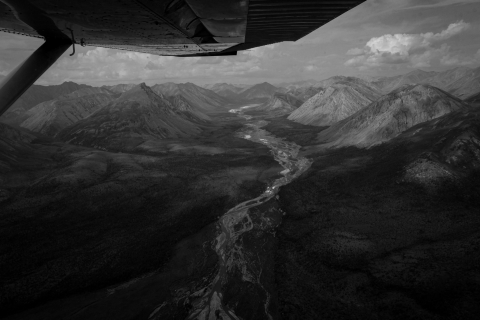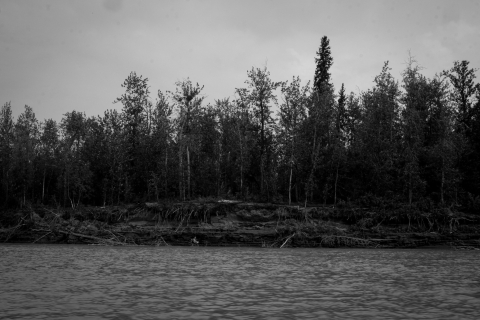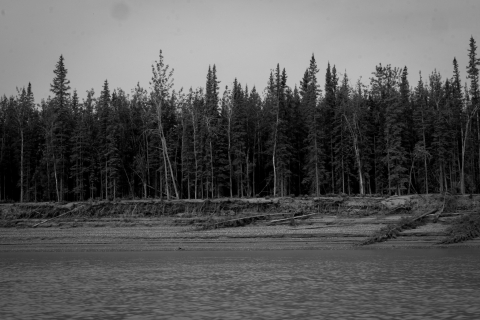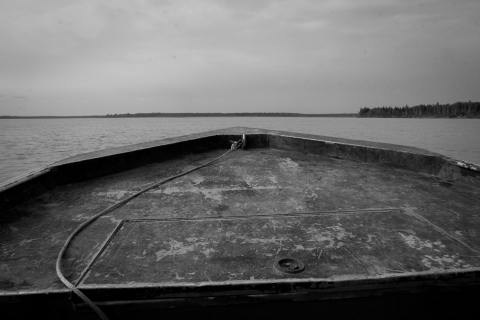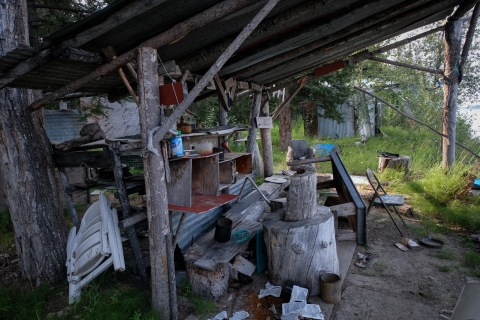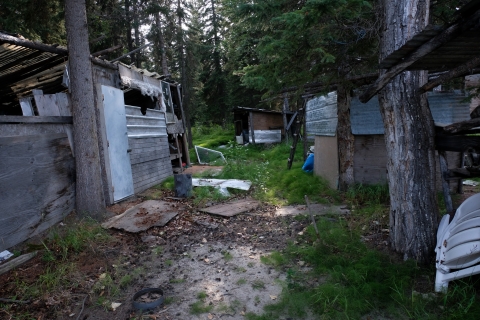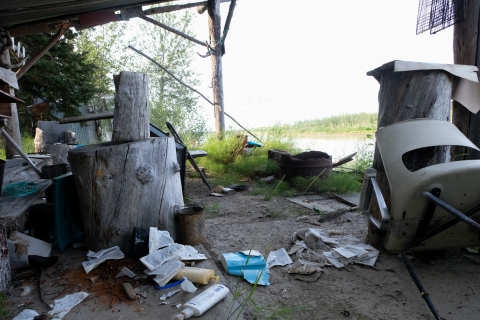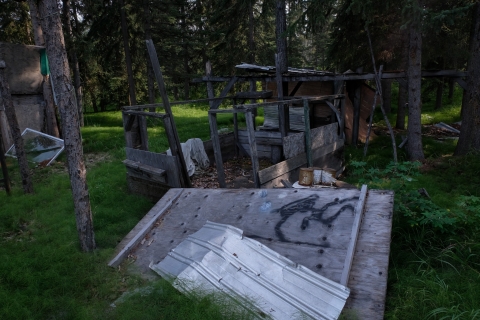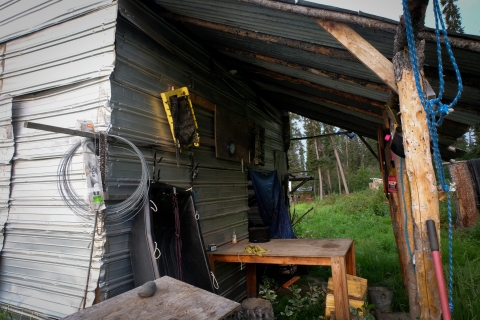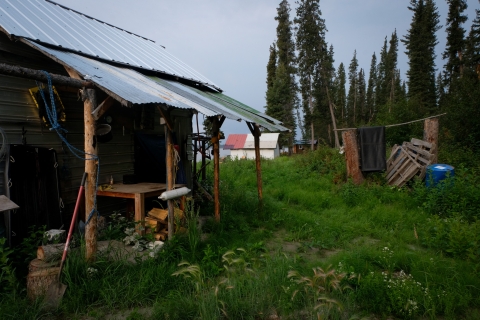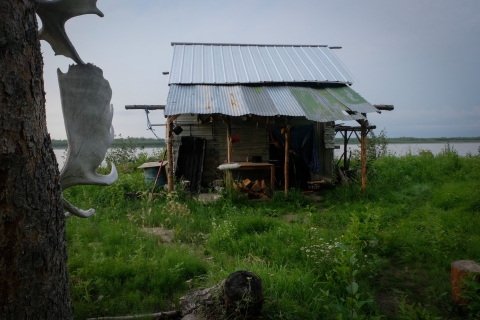A recent trip through National Wildlife Refuges, campgrounds, airstrips and villages north of the Arctic Circle, and later on the Yukon River, coincided with air quality warnings -- the result of wildfires in Alberta -- and Alaska's own wildfires, the first domestic burns of the summer. During the week that followed, additional instances of unpredictable weather and temperatures recurred; their effects on ecosystems, wildlife, and people struck vivid, emotional chords. With my camera and notebook I did my best to reconcile, in scenes and words, the connectivity of these forces felt so powerfully and relentlessly in Galbraith Lake, the Arctic National Wildlife Refuge, the Coastal Plain, the Beaufort Sea, the village of Beaver and the Yukon River.
At first we only flickered – forkfuls held, laugh lines straightened, the conversation's pause an almost natural ebb in temporaneous turn – when that first noise snuck upon us, a muffled tenor caught in the throat of some distant century: thunder.
The mountains, held on the wings of machines, scraped the haranguing skies distant as basslines symphonized.
Darkness, the summary of size itself, oozed and surmised through a tight-lipped embouchure beyond the grasses and the ground squirrels.
And it became entirely true, entirely too large to see without spinning, turning first to the south and then to the fireweed-lined east, the ridges encompassing the west, accumulating amongst many varied gazes, each a colloquium of eons, it dawned upon us and beside us; the darkness, and the north.
When the drops did come, they fell with the weight of the future.
A moment we might never forget, we wrapped ourselves in the Brooks Range, looking up and beyond this weathered gravel airstrip, at this new thing piercing sky.
Never do thunderstorms move so far, their velocities a foreign language, here, hundreds of miles north of the Arctic Circle, where each place that lightning strikes, it strikes for the first time.
As if we had fallen off a massive tightrope – and recovering as best we could, the permafrost soft, the refuge lands, we hoped, unmarred, when the storms at last receded.
And when we flew to see what scars the lightning had left – leaving be, this time, the tessellating shapes and meandering blues, the miraculous herds and the precarious sheets, allowing their stories to persist so colorfully...
...We saw the pages turning also, the old growth forests phasing, their once-still and multitudinous trunks disappearing into floating, choking, fire-hot libraries proliferating through layers of sky.
Perhaps such stories landed here, in Beaver, on the Yukon’s eroding shores along which we slowly traveled; Chief Rhonda Pitka’s eyes wide in disbelief when we told her of the lightning, that moving pen inscribing new chapters upon the land up north.
And the river, we measured and double-measured, was 70 degrees beneath us.
On land, an emptiness felt so fully – it has been four years, said Pitka, the First Chief of Beaver Village Council, since she had fired up her family’s smokehouses, normally brimming with Chinook filets this time of year.
Instead, as we arrived at her own fish camp for the night, Chief Pitka's cooler brimmed a wrong shade of pink – her stow filled not with salmon, but Pop-Tarts.

